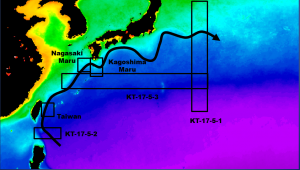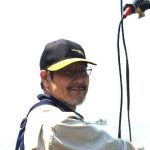Joji Ishizaka
Evaluation of the effect of vertical mixing on phytoplankton variation in the Kuroshio area
Research Summary
Surface nutrients are poor in the Kuroshio Current, which is a western boundary current flowing around Japan from the tropical area, but the subsurface water contains rich nutrients. It has been pointed out that this strong current flows through the strait and near the islands and seamount, so that subsurface nutrients are supplied to the surface layer. In this study, the influence of the Kuroshio to the phytoplankton variation will be evaluated through the Luzon Strait off the coast of Taiwan, on continental shelf of the East China Sea, and at the Tokara Strait to the south of Japan. We will try to clarify how much biological production or what kind of phytoplankton is increased using the various ocean color satellite data. It has been known that phytoplankton increases by supplying nutrients to the surface layer by vertical mixing, such as eddies and frontal eddies caused by topography in the Kuroshio surrounding areas. Recent direct observation of turbulence has revealed that strong vertical mixing occurs, such as when the Kuroshio passes through the Tokara Strait. However, only very limited information has been obtained by in site observation, and the influence on the variation of phytoplankton by vertical mixing over the wide range of Kuroshio area is not clear. In this study, we will try to capture the large scale influence using satellite remote sensing. In this research, we will use satellite data, such as accumulated ocean color satellite data over 20 years and Japanese new high resolution ocean color satellite “Shikisai” which was launched at the end of 2017. In addition, in order to understand the relationship with physics, chemistry and biological processes, satellite data will be compared with previous ship observations. We also participate in cruises and conduct bio-optical observations.
Principal investigator :
Joji Ishizaka
Division for Land-Ocean Ecosystem ResearchInstitute for Space-Earth Environmental Research (ISEE)Nagoya UniversityBiological Oceanography
http://co2.hyarc.nagoya-u.ac.jp/



